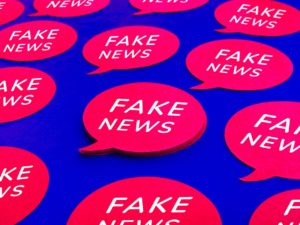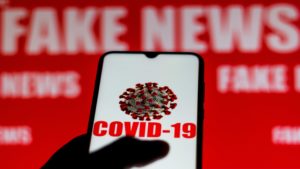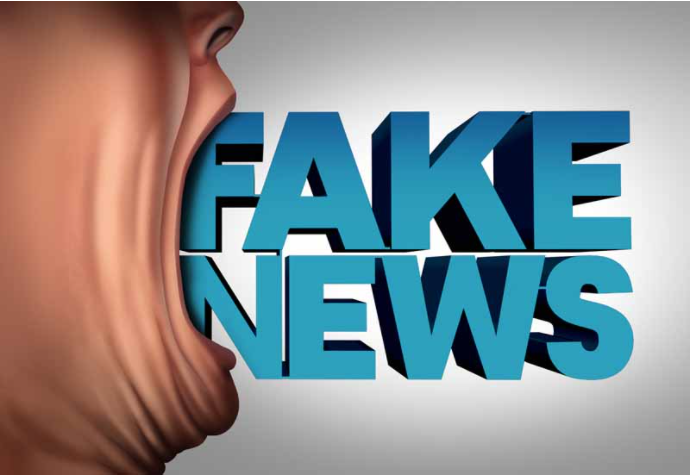Even though most of us were optimistic at the beginning of 2020, there is no disputing that 2020 was a dark year full of challenges, despair, pain and deceit. Horrific events such as the murder of George Floyd, the wildfires and COVID-19 pandemic shook the entire world. Most citizens in America-and the world-were either directly or indirectly affected by the outbursts of “Fake News” that propagated its way through media outlets and into communities as much as the deadly coronavirus.
Some people believe that the term “Fake News” was brought about by the former U.S. president, Donald Trump, as a means of attacking independent media sources throughout his four-year tenure. However, there is evidence available at the Merriam-Webster that reveals the term got used as far back as the late 19th century.
Darrell M. West, Vice President and Director – Governance Studies, Senior Fellow – Center for Technology Innovation says, “Fake news is generated by outlets that masquerade as actual media sites but promulgate false or misleading accounts designed to deceive the public. When these activities move from sporadic and haphazard to organized and systematic efforts, they become disinformation campaigns with the potential to disrupt campaigns and governance in entire countries.”
Even though most of the stories conveyed by popular media outlets are correct, most people are reluctant to trust the information given out through media organizations in fear of propaganda. History has shown us the adverse effects of misinformation and propaganda shared through the media.

After the invention of the printing press around the year 1439, misinformation was rampant and even glorified. For example, according to an article by Jacob Soll, a man of the cloth by the name Bernardino de Feltre preached several times to people in Trent, Italy, about how Jews drank the blood of Christian children during Passover festivities-which led to the torturing and burning of Jews in Italy. These types of false stories were further used to fuel the Nazi plan in World War II. In an article by scholar and Director of Ancient History Encyclopedia, Joshua Mark, even the history storytelling of Pocahontas “highlights the fact that the best-known version of her story comes from English sources, which made the most of her conversion and marriage as propaganda to encourage further colonization of North America.”
More recently, in 2016, misinformation drove a Washington, DC man to shoot up a pizza shop with a rifle because fake news had labeled the Comet Ping Pong pizza shop as a child-trafficking base. In another case, a man died because he believed that liquids used to clean fish tanks could prevent and treat a COVID-19 infection.
Pharma brands face an unprecedented environment of conspiracy theorists, anti-vaxxers, and nation-states intent on disrupting the COVID-19 vaccine. Crisp Thinking Group, LTD, an early-warning intelligence agency published a special report, titled, ‘Vaccine Makers Brace for a Tsunami of False Information.’ In it they cite reputational and compliance risks to pharma brands as “the use authorization of the Pfizer COVID-19 vaccine has provoked a new surge in false information from instigators online, which has put all pharmaceutical brands on high alert. This deceptive information could lead to fictitious reports of adverse events, which would not only threaten patient adoption of a COVID-19 vaccine, it could also overwhelm compliance teams charged with monitoring vaccine safety.”

Some factors have drastically changed how public members have been ingesting, interpreting and distributing fake news and misinformation over the past three decades. However, the three most significant factors are;
- Increase in the population- with a large global population, there are more ways of interpreting information and spreading fake news.
- Technological advancements- technology has made it easier and faster to receive information and news updates as they happen without waiting for the daily newspaper.
- The methods used by media organizations to convey news and information-mainly focusing on linguistic attributes – the linguistic approach used by media organizations and outlets has become more subjective and less objective.
Indeed, the methods and style of news presentation by various media outlets have continued to become more subjective over the past three decades. In a report released in 2019 by the RAND Corporation, there are noticeable changes in the linguistic aspects of news presentation by various media outlets such as; the New York Times, St. Louis Post Dispatch, and the Washington Post before and after the 21st century.
The report claimed that the tone and language used to report the news by media outlets-including broadcast television- went from being focused on official titles, institutions, positions, characters, time references, context-based information, academic concepts, description, and elaboration to becoming more focused on narration, interactions, emotions, personal perspective, explicit opinions, arguments, interviews, and spontaneous speech.
A similar investigation conducted by the NiemanLab Organization revealed that in the 21st century, media coverage, including that of newspapers, has been using two distinctive aspects to tell their stories. The first is simple, and without entailment, the character’s thoughts, words, and actions are revealed to the audience. The second is a combination of dated time, in-depth profiling, and the daily life of a character whose circumstances render a matter that is disturbing or pressing to the public eye.
Coupled with stronger government oversight of social media companies via the Communications Decency Act Section 230, media organizations and outlets (those who provide news coverage and important information affecting the general public) have an opportunity to regain public trust and discredit fake news pushers. They can do this by focusing more on factual and context-based information instead of maneuver through information to persuade the audience towards a particular perspective by over emphasizing emotional and personal interactive aspects.
Lastly, the most effective – and yet by far, the most far-fetched solution relies on individual responsibility. This solution reaches out to every American to by all means avoid creating and distributing “Fake News” to anyone through any platform, words, or actions. Even though a report by the CNN reporter Eliza Mackintosh claims that the world’s ‘fake news’ problem is here to stay, it is up to you and I to make sure that false rumors and misinformation becomes a thing of the past. Otherwise, Americans will never entirely give their trust to the credibility of the information.


